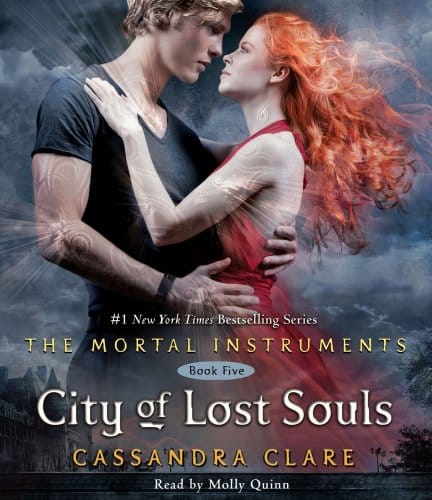City of Lost Souls: An In-Depth Review & Reading Guide
Explore the plot, themes, and characters of Cassandra Clare's City of Lost Souls in this spoiler-light, 800-word review and reading guide.

Introduction: Why "City of Lost Souls" Still Casts a Spell
First published in 2012, "City of Lost Souls" is the fifth installment in Cassandra Clare’s blockbuster young-adult fantasy series, The Mortal Instruments. Although more than a decade has passed since its release, the novel continues to win new readers with its mix of urban fantasy, romance, and supernatural intrigue. Whether you are a Shadowhunter veteran or a newcomer curious about the hype, this 800-word guide will walk you through the essentials—spoiler-light plot points, character arcs, and thematic depth—while helping you decide if the book deserves a spot on your reading list.
Plot Snapshot: Love, Loyalty, and a Dangerous Alliance
"City of Lost Souls" picks up immediately after the cliff-hanger ending of City of Fallen Angels. Clary Fray’s boyfriend, Jace Wayland, has vanished alongside her villainous brother, Sebastian Morgenstern. As the Shadowhunter world reels, Clary, Simon, Isabelle, Alec, and Magnus scramble to locate Jace, only to discover that Sebastian has bound him through dark magic. The novel follows two interwoven quests: Clary infiltrates Sebastian’s circle to rescue Jace from demonic influence, while her friends hunt for a mythical weapon that can sever the unholy bond without killing Jace. Battles span glamorous Parisian nightclubs, eerie demon realms, and the familiar streets of New York City, culminating in a finale that reshapes alliances for the series’ concluding volume.
Fast Facts
• Series placement: Book 5 of 6
• Perspective: Third person, rotating viewpoints
• Page count: 535 (hardcover edition)
• Primary genres: Young-adult fantasy, paranormal romance, urban adventure
Main Characters: Old Favorites and New Depths
Clary Fray: No longer the wide-eyed newcomer, Clary displays sharper tactical skills as she risks everything to save the boy she loves and the brother she still hopes to redeem.
Jace Wayland: Torn between free will and dark compulsion, Jace’s internal struggle supplies much of the emotional tension. His moments of lucidity remind readers why he became a fan favorite.
Sebastian Morgenstern: The charismatic antagonist embodies complex evil. Clare layers just enough vulnerability to keep readers questioning whether redemption is possible.
Simon Lewis, Isabelle Lightwood, Alec Lightwood, Magnus Bane: The supporting cast steps into the spotlight, each confronting personal crossroads—most notably Alec’s crisis over Magnus’s immortality and Simon’s reluctant embrace of vampire power.
Key Themes That Resonate
Consent and autonomy: Through Jace’s forced bond to Sebastian, the story interrogates what it means to lose agency—and how loved ones respond when someone’s body and mind are hijacked.
Love’s moral boundaries: Clary’s willingness to blur ethical lines for Jace invites debate about how far a person should go for love. Parallel storylines involving Alec and Magnus, as well as Simon and Isabelle, echo this question in different registers.
Nature versus nurture: Sebastian’s upbringing under the influence of demon blood challenges the idea that anyone is born beyond salvation. The tension between destiny and choice threads through every major character arc.
Reading Experience: Pacing, Prose, and Tone
Cassandra Clare’s signature blend of witty banter, pop-culture references, and visceral action scenes remains intact. The stakes feel higher and darker than earlier installments, but the humor—often courtesy of Simon—keeps the narrative from sinking into despair. Some readers have critiqued the central romance for melodrama, yet others celebrate the heightened emotion as quintessential YA fantasy. Either way, the brisk chapter endings propel you forward, making the 500+ pages fly by.
How "City of Lost Souls" Fits Into the Mortal Instruments Universe
Book five functions as the penultimate bridge toward the series finale, City of Heavenly Fire. It answers lingering questions about Jonathan Morgenstern’s master plan while sowing seeds for future betrayals. Crucially, it expands the mythology of heavenly weapons and demonic hierarchies, elements that later crossover into The Dark Artifices and The Last Hours spin-offs. If you plan to explore Clare’s broader Shadowhunter Chronicles, skipping this volume would leave significant gaps.
New Reader Advice: Do You Need to Start From Book One?
Short answer: yes. Although Clare includes enough context to jog memories, the emotional payoffs rely on bonds forged in the earlier books. Beginning with City of Bones allows you to track character growth organically and to appreciate the callbacks peppered throughout "City of Lost Souls." Audio editions narrated by Ed Westwick and Molly C. Quinn provide an engaging alternative if you prefer listening.
Where to Buy and Editions to Consider
The novel is widely available in paperback, hardcover, e-book, and audiobook formats. Collectors may hunt for the Barnes & Noble exclusive edition featuring character fan art, while budget-minded readers can opt for used copies through online marketplaces. International readers should note that UK editions sometimes carry alternate cover art under the Simon & Schuster imprint.
Common Questions (FAQ)
Is "City of Lost Souls" appropriate for younger teens? The book contains violence, mild profanity, and sensual scenes. Parents of readers under 14 may wish to preview content.
Does the story end on a cliff-hanger? Yes, though less abrupt than its predecessor. You will want immediate access to City of Heavenly Fire.
Will there be a screen adaptation? While no film or TV version is confirmed, elements from books four through six could appear in any future Shadowhunter reboot.
Final Verdict: Should You Read "City of Lost Souls"?
If you enjoy high-octane urban fantasy that balances swoon-worthy romance with existential stakes, "City of Lost Souls" is a can’t-miss entry. The novel deepens character relationships, raises moral dilemmas, and sets the stage for an epic finale—all while delivering quotable one-liners and cinematic action. Casual readers may find the series commitment daunting, but for dedicated YA fantasy fans, this installment is worth every page.



